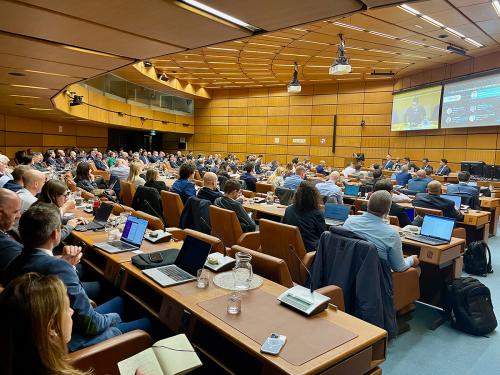Managing seized and frozen assets – what are international norms?

As countries improve their capacity to recover assets derived from criminal activity, they are faced with a challenge: how should these assets be managed while the judicial process is underway?
In brief: An integral part of the asset recovery process is the power to take interim precautionary measures to prevent assets being hidden, spent or sold by the suspects before the final order for confiscation is made by the court. This could involve a court or prosecutor ordering that assets be seized or frozen, placed in the custody of others to manage them, or left with the owner under strict conditions.
Assets such as money in bank accounts can be frozen without the need for active management. Physical or moveable assets – houses, cars, yachts, etc. – often require more active intervention. These assets may require storage or regular maintenance to keep them in good condition and over the course of a criminal court process this can incur significant costs. Other assets may depreciate during the period of seizure and others may perish or degrade over time.
In order for countries to meet the challenge of managing suspected illicit assets, it is necessary to have regard to international obligations and take account of guidance and best practice advice from international organisations. They then need to apply these lessons within their particular domestic context.
Jonathan Spicer, Senior Asset Recovery Specialist at our International Centre for Asset Recovery (ICAR) addressed this topic at a meeting of the Global Forum on Illicit Financial Flows and Sustainable Development on 21–22 September. The Global Forum is an initiative of the German Federal Ministry for Economic Cooperation and Development (BMZ) and the Norwegian Foreign Ministry, organised by the Deutsche Gesellschaft für Internationale Zusammenarbeit (GIZ).
Studying international norms in asset management
Speaking to representatives of European and Latin American asset management institutions, other international experts and civil society representatives, Jonathan outlined the key findings of a recent study on International Norms in Asset Management. This study, a collaboration between ICAR and GIZ, analysed relevant international standards and guidance on best practice in asset management and considered what international legal obligations apply.
The final report will incorporate an analysis of the legal and institutional setup and policies for asset management in five selected countries and assess capabilities as set against the established benchmarks. This will help identify legal, institutional and capacity gaps in these countries and recommend areas for improvement.
Guidance on asset management, but no cut-and-paste model
There is no set model for the managing of assets in criminal or non-conviction based forfeiture cases. The implementation of a system for asset management will be determined by each State according to their own law. Differences between countries may arise due to:
- legal traditions;
- the capacity for recovering criminal assets;
- the scale and nature of assets being recovered;
- the resources available to manage seized assets.
Yet countries do have obligations under international treaties, including the 2003 United Nations Convention against Corruption (UNCAC), the 2005 Council of Europe Convention on Laundering, Search, Seizure and Confiscation of the Proceeds of Crime, and 2014 Directive on the freezing and confiscation of instrumentalities and proceeds of crime in the European Union.
Guidelines also exist, such as the 2004 G8 Best Practice Principles on Tracing, Freezing and Confiscation of Assets, and the 2012 FATF Best Practices on Confiscation. Two key pieces of guidance are currently under review: the 2019 Revised Draft Non-Binding Guidelines on the Management of Frozen, Seized and Confiscated assets (Conference of the States Parties to the UNCAC), and the Effective Management And Disposal of Seized and Confiscated Assets (UNODC).
Proposing international principles for asset management
From these treaties and guidance, Jonathan explained, it is possible to derive a set of key international principles for asset management.
Though still under discussion, these principles include the need for appropriate legislation, a clear asset management framework with defined roles and responsibilities between agencies as well as the engagement of skilled practitioners to manage assets.
Of particular importance is the need for pre-planning prior to the seizure of assets and the need to be able to dispose of assets prior to final confiscation to realise the full value of assets and minimise costs.
Asset management powers should be exercised transparently. This can be achieved by utilising IT systems to register and track seized assets through to final disposal, policies for efficient management and regular audits.
A key theme in the discussion is how to dispose of assets after the final order: can the asset be re-used for social purposes or can the funds realised from the sale of assets be re-purposed to crime-fighting initiatives, for example? In this way, public confidence in criminal asset recovery will be increased as criminals will be seen as not being able to retain the profit from their crimes.




